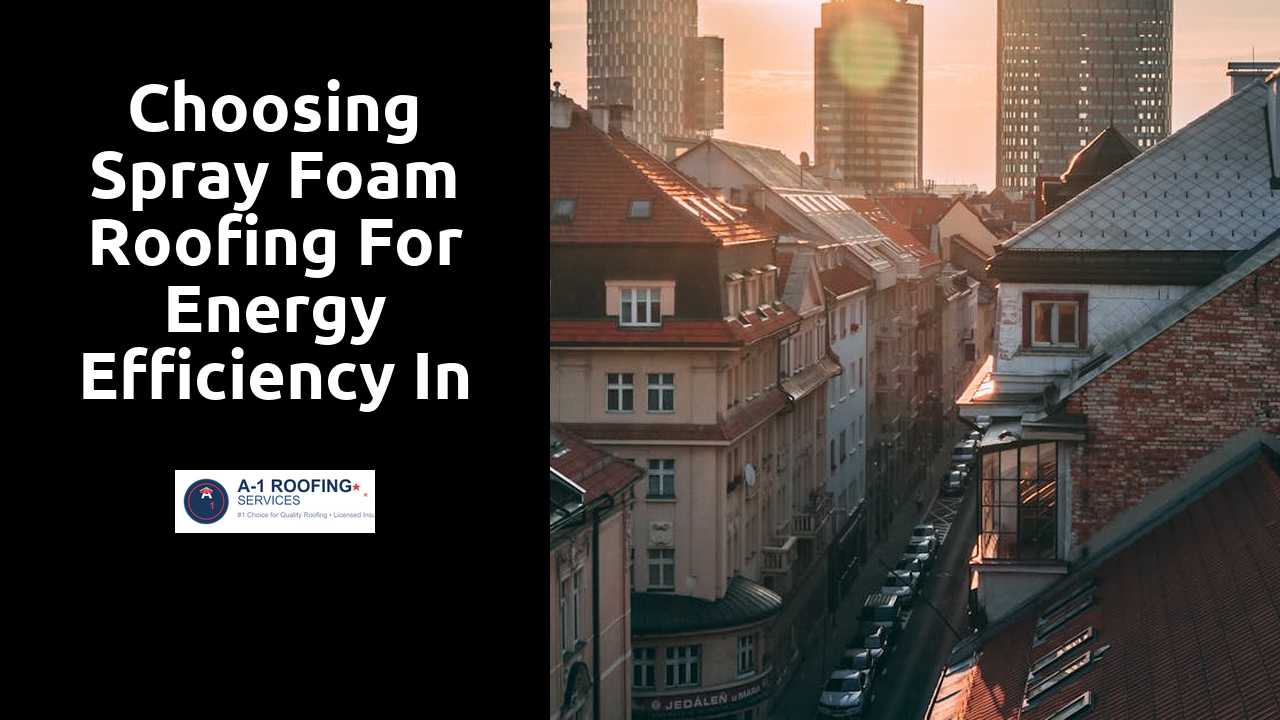
Choosing Spray Foam Roofing for Energy Efficiency in Commercial Spaces
Table Of Contents
Comparing Spray Foam to Traditional Roofing Options
Spray foam roofing stands out among traditional options like asphalt, metal, and single-ply membranes due to its unique application method and insulative properties. While traditional roofing materials often require periodic replacements or significant maintenance, spray foam creates a seamless barrier that is highly resistant to leaks. This characteristic significantly enhances the longevity of the roof, reducing the need for extensive repairs.
In terms of energy efficiency, spray foam roofing offers superior insulation compared to conventional materials. The expansion of spray foam upon application fills gaps and crevices, minimizing energy loss and improving temperature regulation within commercial spaces. Traditional roofing options may provide some insulation, but they often fall short in sealing a building effectively, leading to higher energy costs over time.
This new blog post covers this topic in more detail.
Key Differences in Performance and Longevity
Spray foam roofing stands out for its seamless application and cohesive layer, which creates a barrier against leaks and water damage. Unlike traditional roofing materials that are often installed in sections, spray foam forms a uniform and continuous surface. This characteristic not only enhances the roof’s durability but also reduces potential weak points where leaks might develop over time, providing a more reliable solution for commercial buildings.
Longevity is another area where spray foam excels compared to conventional roofing options. A properly installed spray foam roof can last up to 50 years with appropriate maintenance, significantly outpacing the lifespan of asphalt or single-ply membranes. The inherent properties of spray foam, including its resistance to harsh weather conditions and UV exposure, contribute to its ability to withstand the test of time, making it a smart investment for businesses seeking long-term value.
Energy Efficiency Ratings of Spray Foam Roofing
Spray foam roofing has gained recognition for its impressive energy efficiency, often outperforming traditional roofs in this regard. Its ability to create a continuous thermal barrier reduces energy loss significantly. The insulation properties contribute to maintaining stable indoor temperatures, which can lead to lower heating and cooling costs. Business owners often find that this translates to substantial savings over time, enhancing overall operational efficiency.
The energy efficiency of spray foam is often measured through its R-value, a numerical expression of thermal resistance. Higher R-values correspond to better insulating properties, making spray foam a preferred choice for many commercial applications. This roofing solution not only improves energy efficiency but also aids in reducing a building's carbon footprint, aligning with sustainability goals. The long-term investment in spray foam roofing often pays off through reduced energy bills and increased comfort levels within the space.
Understanding R-Value and Its Importance
R-value measures a material's resistance to heat transfer, signifying its effectiveness as an insulator. The higher the R-value, the better the insulation can reduce energy loss, which is crucial for maintaining comfortable indoor temperatures. Spray foam roofing typically features an impressive R-value, often surpassing that of traditional roofing materials. This superior insulative capability ultimately translates into significant energy savings, making it a popular choice for commercial buildings aiming to enhance energy efficiency.
Understanding R-value is essential for building owners when evaluating roofing options. It influences decisions related to energy consumption and long-term operational costs. By selecting materials with higher R-values, property managers can not only reduce heating and cooling expenses but also boost overall sustainability. Proper insulation promotes a healthier indoor environment, contributing to improved employee productivity and well-being.
Choosing the Right Contractor for Installation
Selecting a qualified contractor for spray foam roofing installation requires careful consideration. Start by researching local professionals who have experience specifically with commercial projects. Verify their licenses and certifications to ensure compliance with industry standards. Reading customer reviews and testimonials can also provide insight into their work ethic and quality of service.
In addition to credentials, assess their knowledge about spray foam technology and energy efficiency. A reliable contractor should be able to explain the installation process clearly and address any concerns about materials or warranties. Requesting a detailed estimate will help you compare services and understand the overall costs involved. Strong communication skills and a willingness to provide ongoing support can indicate a contractor's commitment to customer satisfaction.
What to Look for in a Roofing Professional
When selecting a roofing professional, experience and expertise play crucial roles. A contractor with a solid track record in spray foam roofing can ensure that the installation meets industry standards. It's essential to inquire about their certifications and any specialized training they have received. This level of professionalism often translates to a more efficient installation process and a higher quality outcome.
References and reviews from previous clients can provide valuable insights into a contractor's reliability. Look for those who can demonstrate a portfolio of completed projects similar to yours. Transparent communication and a clear understanding of project timelines and costs are also vital indicators of a trustworthy professional. Pricing should be competitive, but beware of unusually low estimates, as these may reflect subpar materials or workmanship.
Related Links
How to Select the Right Membrane Roofing for Your Commercial NeedsBenefits and Challenges of Built-Up Roofing Systems